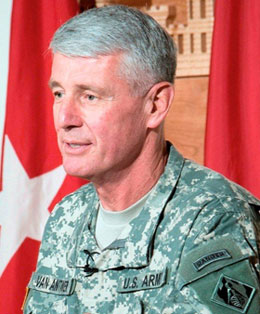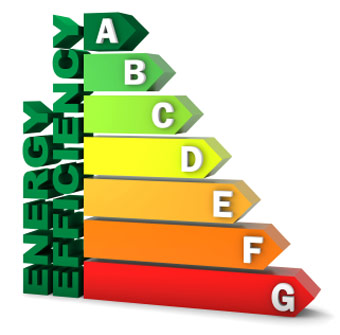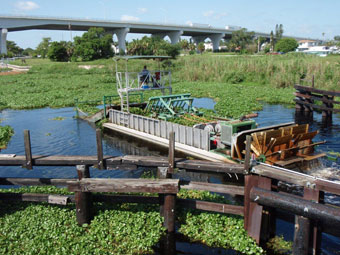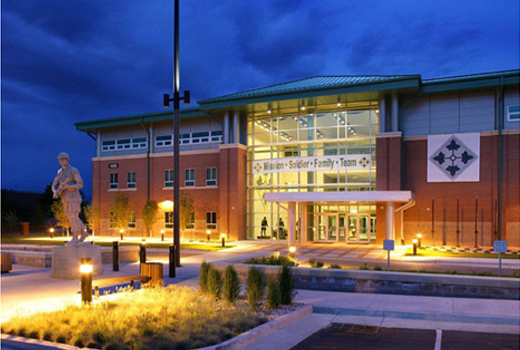U.S. Army Corps of Engineers: Building Sustainability Strong
From wetlands reconstruction in Iraq to green roofs in Fort Belvoir, Va., the U.S. Army Corps of Engineers (USACE) focuses its efforts toward building sustainability into virtually everything we do. When we use the talents and innovation within USACE and engineering communities to help preserve our planet and build our Army strong for years to come, I call it “building to last.”
We have an extremely diverse and global mission with 37,000 employees in more than 90 countries around the world working to improve our security, to energize our economy and to reduce risks from disasters. This international reach, combined with our diverse mission, gives us an incredibly valuable and unique opportunity to make a significant impact on the sustainability of our global resources and the security of our Nation.
In keeping with this tremendous responsibility, the Corps has developed and begun to implement a Strategic Sustainability Performance Plan (SSPP). (For more detailed information on the USACE’s SSPP read this issue’s Build Smart department.) Our SSPP is designed to be a dynamic document: It will change and expand as we learn more, and do more, to make sustainability a reality in all aspects of our missions, activities and services. The SSPP provides a single, organizing framework in which we are beginning to capture and to align our diverse activities supporting sustainability, many of which have been ongoing for years.

Photo Credit: Susan Clizbe (U.S. Army Corps of Engineers Wilmington District)
This plan builds on past successes by laying out 10 sustainability goals and the methods to achieve them, such as reducing greenhouse gas emissions, engaging in regional and local sustainable planning efforts, improving water use efficiency and management, improving sustainable acquisition practices and implementing innovative sustainable practices. Overall, this plan requires us to take a system-based continual improvement approach that will advance our sustainability performance by training employees, developing, refining and executing programs, and applying metrics to guide and to enable our journey toward sustainability. Further, it enables us to align USACE talents and energy, and accelerate us toward both our internal and federally defined goals.
While we used disciplined thought in developing this very robust and comprehensive approach to building sustainability, the next step for us will be to take disciplined action to bring this plan to life. I echo the vision of our Assistant Secretary of the Army for Civil Works, Ms. Jo-Ellen Darcy, who noted that “while systems analysis and programmatic solutions are important, our key to success will be the assignment and acceptance of personal responsibility for achieving a sustainable future by leaders throughout USACE.” In short, we gotta deliver!
At USACE, we are taking a two-pronged approach to implementing the goals of the SSPP. First, we are looking at ourselves and within our organization, from the people who work here and how we conduct our day-to-day business, to the technologies and facilities we own and operate. From an operating standpoint, we need to improve efficiencies in our facilities and vehicles, install sustainable lighting, drive less and drive more fuel efficient vehicles, and increase our use of both alternative fueled vehicles and renewable energy. Across the board we need to improve water use and management, and improve sustainable acquisition practices.
We are getting there. Right now we are working with the National Oceanic and Atmospheric Administration (NOAA) to investigate converting selected vessels in the Corps’ floating plant to use Biofuel B100. Testing of this fuel is already under way, with plans to test B100 on five selected vessels before the end of May, including the motor vessel Pathfinder in our St. Louis District.
I believe the Corps can help reduce greenhouse gas (GHG) emissions related to our activities such as business and commuter travel. Significant portions of the Corps’ GHG emissions are the result of employee commuting to and from work, and business air travel. These are areas where we can easily make changes by taking advantage of telework opportunities, webinars, using more video teleconferencing and, in general, reducing our amount of travel.

© iStockphoto.com/VCTStyle
As owners and operators of facilities, we are working to procure and to use environmentally friendly technologies. For example, we recently renovated our Alaska District field office at the Chena Flood Control Project and installed radiant floor heat and photoelectric arrays. We installed solar electricity systems at nine Sacramento District park and dam operations facilities, which we estimate will provide 41 percent of each office’s electricity needs, curbing carbon emissions by 156,000 pounds per year.
The second way we are working to meet our sustainability goals is through the services we provide our customers across our civil, military and research and development business lines. It is here, among these diverse missions, that we look hard at what we can do to integrate sustainability into our products and services in support of our customers’ needs, such as conducting energy life-cycle cost analyses, executing studies for long-term water supply for Army installations and conducting ecosystem service valuations for military lands, to name a few.
For these studies, we rely heavily on the experts working hard at our Engineer Research and Development Center (ERDC) for advanced, relevant technologies to help us get even better at building sustainability into everything we do. They are working with our partners at other agencies, academia, private industry and even non-government organizations to develop and to apply the latest solutions for our Nation’s challenges. Together, we must find innovative ways to reduce operating costs and to shrink the deployed force logistics tail, more effectively use operations and maintenance dollars, and just be a leader for the Nation in sustainability.
This disciplined thought process has already had an impact. We have required our engineers to be trained in implementing sustainability by attaining Leadership in Energy and Environmental Design (LEED) accreditation from the U.S. Green Building Council. And, we are also ensuring that what we build achieves LEED Silver or higher certification. For example, the Washington Headquarters Services facility in Northern Virginia will be the largest USACE construction project on pace to become LEED Gold Certified. It will use 50 percent less water than a traditional building of the same size — saving 4.5 million gallons of drinking water per year. It also takes advantage of motion–activated light–emitting diodes (LEDs). We will replant many of the trees removed during construction around the building.
For our Army customers, we are installing an integrated photovoltaic roof at Fort Huachuca, Ariz., which provides a long lasting, well-sealed flat roof that generates electricity. At Fort Irwin, Calif., we are building a deployable renewable energy power station, which will provide a reliable source of renewable and sustainable energy for remote, off-grid facilities while reducing operations and maintenance costs. This station includes solar, wind, conventional generator technologies, battery storage and power conditioning to serve stand-alone loads.
Overall, the SSPP reinforces our goal of becoming national leaders and experts in our profession in developing and applying sustainable solutions to the needs of the Nation. We must strive to stay innovative and challenge the norm while setting new standards for sustainability.
Jacksonville District's biologists and technicians use safe, innovative methods to control the spread of invasive vegetation, restoring shoreline ecology and ensuring safe navigation of waterways. |
 U.S. Army Corps of Engineers Photo |
|---|
Sustainability is not a buzzword. It is, and should be, an integral part of everything we do. It is an important characteristic of a strong, resilient Nation and ecosystem. To help build our Nation and preserve our planet to last, we will need the collective efforts of each one of us – from the government to the public sector – to make a difference to positively impact the health and vitality of our global resources. At the Corps, we are working hard to do our part to build our Army, and our Nation, strong.





























